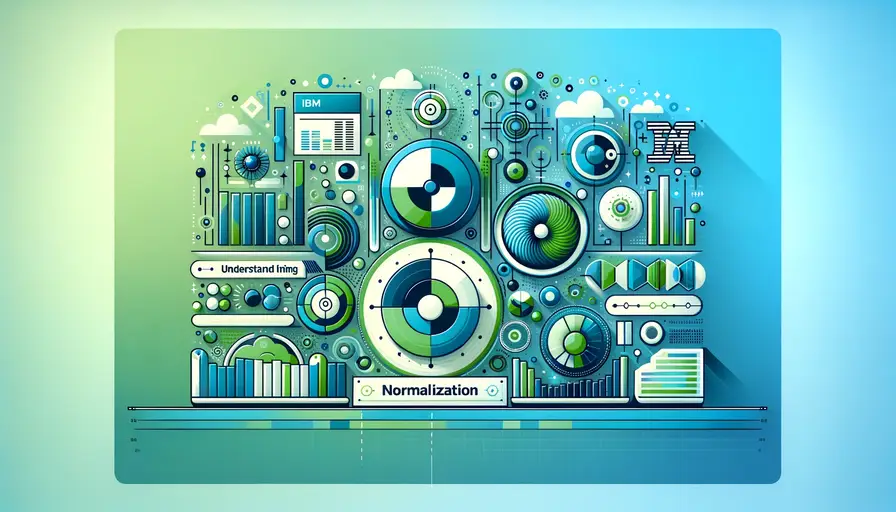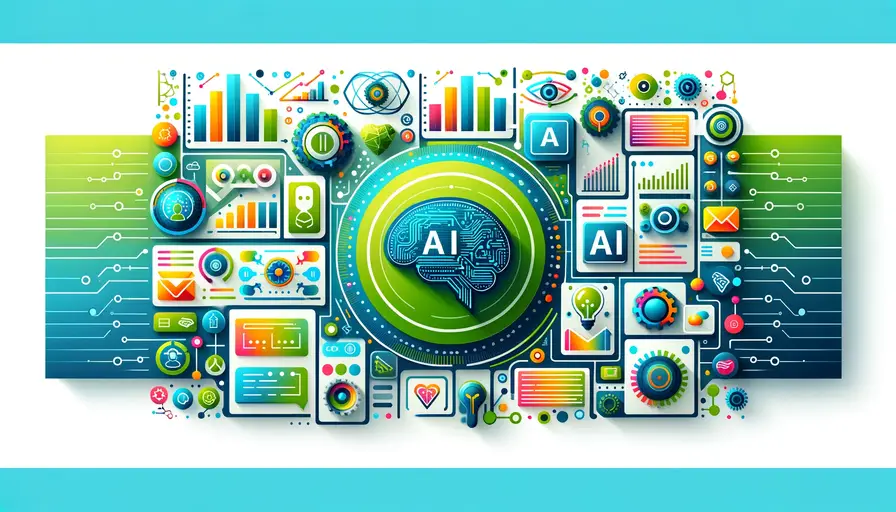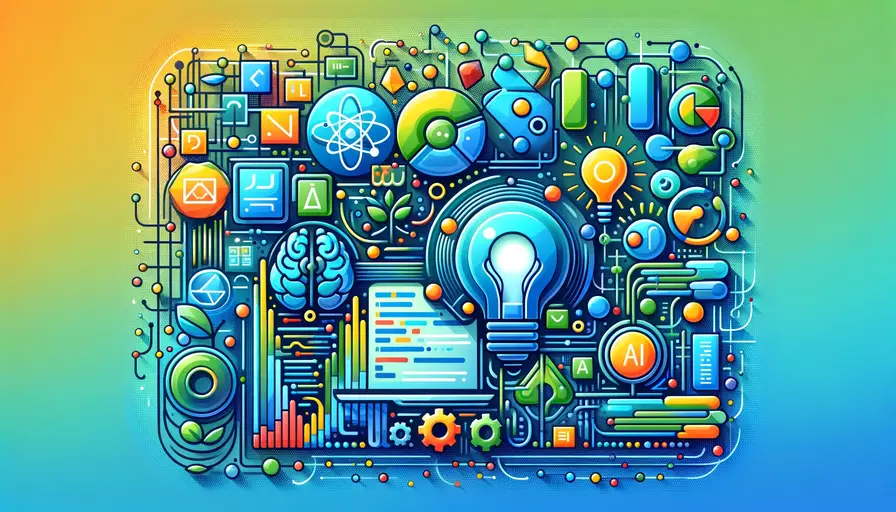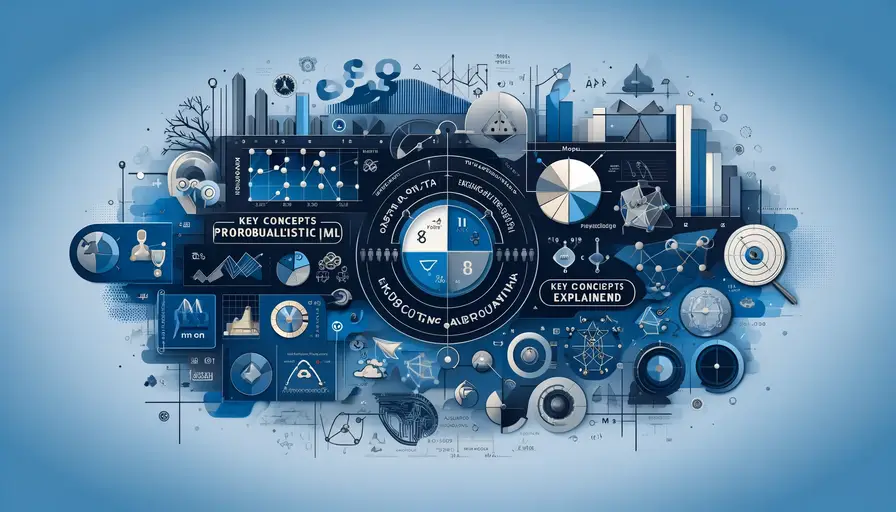
Artificial Intelligence

The Impact of AI on Various Industries
Transforming Healthcare
Artificial Intelligence (AI) is revolutionizing the healthcare industry by improving diagnostic accuracy, enhancing patient care, and accelerating drug discovery. AI algorithms can analyze medical images such as X-rays, MRIs, and CT scans with remarkable precision, often surpassing human capabilities. For instance, AI systems are used to detect early signs of diseases like cancer, which can lead to timely and more effective treatments.
AI is also enhancing patient care through personalized medicine. By analyzing a patient's genetic information, medical history, and lifestyle, AI can recommend tailored treatment plans. This approach moves away from the one-size-fits-all model, allowing for more precise and effective treatments. Additionally, AI-powered predictive analytics can identify patients at risk of developing certain conditions, enabling preventive measures and early interventions.
In drug discovery, AI accelerates the identification of potential drug candidates by analyzing vast datasets of chemical compounds and biological information. Platforms like Atomwise utilize AI to model the interactions between drugs and biological targets, speeding up the development process. This innovation not only reduces costs but also brings life-saving drugs to market faster.
Revolutionizing Finance
The finance industry is leveraging AI to enhance decision-making, improve customer experiences, and detect fraud. AI algorithms can analyze large volumes of financial data to identify patterns and trends, providing valuable insights for investment decisions. For instance, AI-driven predictive models can forecast market movements and asset prices, helping investors make informed decisions.
 Yoshua Bengio: Pioneering Contributions to Deep Learning for AI
Yoshua Bengio: Pioneering Contributions to Deep Learning for AIAI is also transforming customer experiences in finance through personalized services. Chatbots and virtual assistants, powered by natural language processing (NLP), can handle customer inquiries, process transactions, and provide financial advice. These AI tools are available 24/7, offering convenience and efficiency. Financial institutions like Betterment use AI to provide personalized investment recommendations based on individual goals and risk tolerance.
Fraud detection is another critical area where AI is making a significant impact. Machine learning algorithms can analyze transaction data in real-time to detect unusual patterns that may indicate fraudulent activity. These systems continuously learn and adapt to new fraud tactics, improving their accuracy over time. By implementing AI-powered fraud detection, financial institutions can protect their customers and reduce financial losses.
Enhancing Retail
AI is transforming the retail industry by personalizing customer experiences, optimizing supply chains, and improving inventory management. Personalized shopping experiences are achieved through AI-driven recommendation systems that analyze customer data to suggest products that match their preferences. Retailers like Amazon and Netflix use AI to deliver personalized recommendations, enhancing customer satisfaction and boosting sales.
In supply chain optimization, AI helps retailers manage logistics more efficiently. Machine learning algorithms can predict demand, optimize routes, and manage inventory levels, ensuring that products are available when and where they are needed. This efficiency reduces costs and improves customer satisfaction by minimizing stockouts and delivery delays.
 Michael Jordan: A Machine Learning Connection?
Michael Jordan: A Machine Learning Connection?AI also plays a crucial role in improving inventory management. By analyzing sales data, customer behavior, and market trends, AI systems can predict which products are likely to be in demand and adjust inventory levels accordingly. This proactive approach helps retailers avoid overstocking or understocking, ensuring that they can meet customer demand while minimizing costs.
AI in Everyday Life
Enhancing Home Automation
AI is transforming home automation, making our lives more convenient and efficient. Smart home devices, powered by AI, can learn and adapt to our preferences, automating routine tasks and providing personalized experiences. For instance, AI-powered thermostats like the Nest Learning Thermostat learn your schedule and adjust the temperature accordingly, optimizing energy usage and ensuring comfort.
Voice-activated assistants, such as Amazon Alexa and Google Assistant, are becoming central to home automation. These AI-driven devices can control smart home gadgets, answer questions, play music, and even help with daily planning. By integrating with other smart devices, they create a seamless and interconnected home environment.
Security is another area where AI enhances home automation. AI-powered security systems can monitor your home in real-time, detect unusual activities, and alert you instantly. Advanced systems use facial recognition to identify visitors and grant access, providing an additional layer of security. With AI, home automation is becoming smarter, safer, and more intuitive.
 The Theory of Machine Learning: Harnessing Data's Power
The Theory of Machine Learning: Harnessing Data's PowerImproving Personal Assistants
AI-powered personal assistants are becoming an integral part of our daily lives, helping us manage tasks, organize schedules, and access information. These assistants, such as Siri and Cortana, use natural language processing (NLP) to understand and respond to voice commands, making interactions more natural and efficient.
Personal assistants can help manage calendars, set reminders, and send messages, streamlining daily routines. They can also provide real-time information, such as weather updates, news, and traffic conditions, helping users make informed decisions. By learning from user interactions, AI assistants can offer personalized suggestions and anticipate needs, improving their usefulness over time.
In addition to individual tasks, AI personal assistants are enhancing productivity and collaboration in professional settings. Tools like Google Assistant and Microsoft Teams integrate with business applications to schedule meetings, manage projects, and facilitate communication. These assistants help professionals stay organized and focused, enhancing efficiency and productivity.
Example: Using AI for Personal Assistant
import openai
# Initialize OpenAI API
openai.api_key = 'your-api-key'
# Define a function to ask a question to the AI assistant
def ask_assistant(question):
response = openai.Completion.create(
engine="text-davinci-003",
prompt=question,
max_tokens=150
)
return response.choices[0].text.strip()
# Example usage
question = "What's the weather like today?"
answer = ask_assistant(question)
print(f"Assistant: {answer}")In this example, an AI-powered personal assistant using the OpenAI GPT-3 API responds to a question about the weather. This demonstrates how AI can be integrated into personal assistants to provide real-time information and support daily tasks.
 Exploring Machine Learning Models with Multi-Output Support
Exploring Machine Learning Models with Multi-Output SupportRevolutionizing Entertainment
AI is revolutionizing the entertainment industry by creating personalized content, enhancing gaming experiences, and producing music and art. Streaming services like Netflix and Spotify use AI algorithms to analyze user preferences and recommend content tailored to individual tastes. This personalization enhances user satisfaction and engagement.
In the gaming industry, AI is used to create more realistic and immersive experiences. AI-driven game characters can learn from player behavior, adapting their actions to provide more challenging and engaging gameplay. Procedural content generation, powered by AI, allows for the creation of vast and dynamic game worlds, offering unique experiences for each player.
AI is also making significant strides in creative fields like music and art. AI algorithms can compose music, generate visual art, and even write stories. Tools like Amper Music and DeepArt enable creators to leverage AI in their artistic processes, exploring new possibilities and pushing the boundaries of creativity. AI's ability to generate and personalize content is transforming how we consume and create entertainment.
AI in Business Operations
Enhancing Customer Service
AI is transforming customer service by providing faster and more efficient support through chatbots and virtual assistants. These AI-driven tools can handle a wide range of customer inquiries, from answering common questions to processing transactions. By automating routine tasks, AI frees up human agents to focus on more complex and high-value interactions.
 Decoding Decision Trees: A Crucial Machine Learning Algorithm
Decoding Decision Trees: A Crucial Machine Learning AlgorithmChatbots, such as those powered by Dialogflow, can be integrated into websites and messaging platforms to provide 24/7 customer support. They use natural language processing (NLP) to understand and respond to customer queries in real-time. This immediate assistance improves customer satisfaction and reduces wait times.
Virtual assistants, like those offered by Zendesk and Salesforce, enhance customer service by providing personalized support. They can access customer data to offer tailored recommendations and solutions, improving the overall customer experience. By leveraging AI, businesses can deliver more responsive and personalized customer service, building stronger customer relationships.
Optimizing Supply Chain Management
AI is revolutionizing supply chain management by optimizing logistics, improving inventory management, and enhancing demand forecasting. Machine learning algorithms can analyze historical data and market trends to predict demand more accurately, ensuring that businesses have the right products in the right quantities at the right time.
AI-powered tools, like those offered by IBM Watson Supply Chain, can optimize routes and schedules for transportation, reducing costs and improving delivery times. These tools consider various factors such as traffic, weather, and fuel consumption to determine the most efficient routes.
 Determining Whether it's Software or Hardware-Based
Determining Whether it's Software or Hardware-BasedIn inventory management, AI helps businesses maintain optimal stock levels by predicting when and where products will be needed. This proactive approach reduces the risk of overstocking or stockouts, improving efficiency and customer satisfaction. By integrating AI into supply chain management, businesses can enhance operational efficiency and respond more effectively to market demands.
Example: AI in Demand Forecasting
import pandas as pd
from sklearn.model_selection import train_test_split
from sklearn.ensemble import RandomForestRegressor
from sklearn.metrics import mean_absolute_error
# Load dataset
data = pd.read_csv('sales_data.csv')
# Define features and target
X = data.drop('Sales', axis=1)
y = data['Sales']
# Split data into training and testing sets
X_train, X_test, y_train, y_test = train_test_split(X, y, test_size=0.2, random_state=42)
# Train Random Forest model
model = RandomForestRegressor(n_estimators=100, random_state=42)
model.fit(X_train, y_train)
# Make predictions
y_pred = model.predict(X_test)
# Evaluate the model
mae = mean_absolute_error(y_test, y_pred)
print(f"Mean Absolute Error: {mae}")In this example, a Random Forest regressor from scikit-learn is used to forecast demand based on sales data. This demonstrates how AI can be applied to predict future sales, aiding in inventory management and supply chain optimization.
Improving Marketing Strategies
AI is enhancing marketing strategies by enabling more targeted and personalized campaigns. Machine learning algorithms can analyze customer data to segment audiences and predict their preferences, allowing marketers to tailor their messages and offers accordingly. This personalization increases the effectiveness of marketing campaigns and improves customer engagement.
AI-powered tools like HubSpot and Marketo help marketers automate and optimize their campaigns. These platforms can manage and analyze customer interactions across multiple channels, providing insights that inform marketing strategies. By leveraging AI, businesses can deliver more relevant and timely content, driving better results.
Predictive analytics, another AI application, helps marketers anticipate customer behavior and trends. By analyzing historical data, AI can identify patterns that indicate future actions, such as purchase likelihood or churn risk. This information enables marketers to proactively address potential issues and capitalize on opportunities, improving overall campaign performance.
Ethical and Societal Implications of AI
Ensuring Ethical AI Development
As AI continues to evolve, ensuring ethical development and deployment is crucial. AI systems must be designed to respect privacy, fairness, and transparency. Developers should adhere to ethical guidelines and frameworks, such as those provided by AI Ethics Guidelines, to ensure that AI technologies benefit society as a whole.
Privacy is a major concern in AI development. AI systems often require large amounts of data, which can include sensitive personal information. Developers must implement robust data protection measures to ensure that this data is collected, stored, and processed securely. Techniques like differential privacy can help protect individual data while allowing for meaningful analysis.
Fairness is another critical consideration. AI systems must be designed to avoid bias and discrimination. This requires diverse and representative training data, as well as regular audits to detect and address any biases that may arise. By prioritizing fairness, developers can create AI systems that are more inclusive and equitable.
Addressing Job Displacement
The rise of AI has raised concerns about job displacement, as automation may replace certain tasks traditionally performed by humans. However, AI also creates new opportunities and roles, particularly in areas that require creativity, problem-solving, and emotional intelligence. To address the challenges of job displacement, it is essential to invest in education and training programs that equip workers with the skills needed in an AI-driven economy.
Reskilling and upskilling initiatives can help workers transition to new roles and industries. Governments, educational institutions, and businesses must collaborate to provide accessible and affordable training programs. By preparing the workforce for the future, society can harness the benefits of AI while minimizing its disruptive impacts.
Furthermore, AI can augment human capabilities, enhancing productivity and job satisfaction. By automating routine and repetitive tasks, AI allows workers to focus on more meaningful and complex activities. This symbiotic relationship between humans and AI can lead to more fulfilling and productive work environments.
Example: Implementing Ethical AI
from aif360.datasets import BinaryLabelDataset
from aif360.algorithms.preprocessing import Reweighing
from sklearn.ensemble import RandomForestClassifier
from sklearn.metrics import classification_report
# Load dataset
data = pd.read_csv('fairness_data.csv')
# Define features and target
X = data.drop('Outcome', axis=1)
y = data['Outcome']
# Convert to BinaryLabelDataset
bld = BinaryLabelDataset(favorable_label=1, unfavorable_label=0, df=pd.concat([X, y], axis=1), label_names=['Outcome'])
# Apply reweighing to mitigate bias
rw = Reweighing()
bld_transf = rw.fit_transform(bld)
# Split data into training and testing sets
X_train, X_test, y_train, y_test = train_test_split(bld_transf.features, bld_transf.labels.ravel(), test_size=0.2, random_state=42)
# Train Random Forest model
model = RandomForestClassifier(n_estimators=100, random_state=42)
model.fit(X_train, y_train)
# Make predictions
y_pred = model.predict(X_test)
# Evaluate the model
print(classification_report(y_test, y_pred))In this example, the AIF360 toolkit is used to implement ethical AI practices. The Reweighing technique adjusts the dataset to mitigate bias, ensuring that the AI model is fair and equitable.
Promoting Transparency and Accountability
Transparency and accountability are essential for building trust in AI systems. Developers must be transparent about how AI algorithms work, the data they use, and the decisions they make. This openness allows users to understand and trust AI technologies, fostering greater acceptance and adoption.
Explainable AI (XAI) techniques help make AI systems more transparent by providing insights into how they make decisions. Tools like LIME and SHAP can explain the output of machine learning models, making them more interpretable. By using XAI, developers can ensure that AI systems are understandable and accountable.
Accountability requires that developers take responsibility for the outcomes of AI systems. This includes addressing any negative impacts and continuously improving the technology. Establishing clear governance frameworks and oversight mechanisms ensures that AI systems are developed and used responsibly. By promoting transparency and accountability, society can harness the benefits of AI while mitigating its risks.
Future Prospects of AI
Advancements in Natural Language Processing
Natural Language Processing (NLP) is one of the most exciting areas of AI, with significant advancements on the horizon. NLP enables machines to understand and generate human language, opening up new possibilities for communication and interaction. Future developments in NLP will lead to more sophisticated and human-like AI systems.
One promising area is the development of multimodal AI systems that can understand and generate language, images, and sounds simultaneously. These systems will enhance user experiences by providing more intuitive and context-aware interactions. For example, a multimodal AI assistant could understand a spoken request, recognize related visual cues, and provide a comprehensive response.
Another area of advancement is in the creation of context-aware conversational agents. These agents will be able to maintain context over long conversations, understand complex queries, and provide more accurate and relevant responses. This will improve the effectiveness of AI-driven customer support, virtual assistants, and other applications that rely on natural language interaction.
Innovations in Autonomous Systems
Autonomous systems, such as self-driving cars and drones, are set to revolutionize transportation and logistics. AI technologies are driving these innovations, enabling machines to navigate complex environments, make real-time decisions, and operate safely and efficiently. The future will see increased adoption and sophistication of autonomous systems.
Self-driving cars, powered by AI, will transform how we travel, reducing traffic accidents and congestion. These vehicles use a combination of computer vision, sensor data, and machine learning algorithms to navigate roads and respond to dynamic conditions. Companies like Waymo and Tesla are leading the way in developing autonomous driving technologies.
Drones, equipped with AI, will play a crucial role in various industries, from delivery services to agriculture. AI enables drones to perform tasks such as package delivery, crop monitoring, and infrastructure inspection with high precision and efficiency. Innovations in drone technology will lead to new applications and increased adoption across different sectors.
Example: Developing Autonomous Driving AI
import numpy as np
from sklearn.model_selection import train_test_split
from sklearn.ensemble import GradientBoostingClassifier
from sklearn.metrics import accuracy_score
# Load dataset
data = pd.read_csv('autonomous_driving_data.csv')
# Define features and target
X = data.drop('Action', axis=1)
y = data['Action']
# Split data into training and testing sets
X_train, X_test, y_train, y_test = train_test_split(X, y, test_size=0.2, random_state=42)
# Train Gradient Boosting model
model = GradientBoostingClassifier(n_estimators=100, random_state=42)
model.fit(X_train, y_train)
# Make predictions
y_pred = model.predict(X_test)
# Evaluate the model
accuracy = accuracy_score(y_test, y_pred)
print(f"Accuracy: {accuracy}")In this example, a Gradient Boosting classifier is used to develop an AI model for autonomous driving. The model is trained on data from autonomous vehicles to predict driving actions, demonstrating how AI can be applied to create self-driving technologies.
The Rise of AI in Healthcare
AI's role in healthcare will continue to grow, offering new solutions for diagnosis, treatment, and patient care. AI algorithms will become more accurate and reliable, enabling early detection of diseases and personalized treatment plans. This will lead to improved patient outcomes and more efficient healthcare systems.
AI-powered diagnostic tools will become more sophisticated, capable of analyzing various types of medical data, including imaging, genetic information, and electronic health records. These tools will assist healthcare providers in making more accurate diagnoses and treatment decisions. For example, AI systems could analyze patient data to predict the risk of developing certain conditions, enabling preventive measures.
In personalized medicine, AI will help tailor treatments to individual patients based on their unique characteristics. This approach will move away from the traditional one-size-fits-all model, offering more effective and personalized therapies. AI will also accelerate drug discovery, identifying new drug candidates and optimizing clinical trials, bringing life-saving treatments to market faster.
AI is poised to transform various aspects of our lives, from healthcare and finance to entertainment and everyday tasks. By leveraging AI's capabilities, we can create more efficient, personalized, and innovative solutions. However, it is crucial to address the ethical and societal implications of AI to ensure that its benefits are realized responsibly and equitably. As AI continues to advance, it will undoubtedly play a pivotal role in shaping the future.
If you want to read more articles similar to Artificial Intelligence, you can visit the Artificial Intelligence category.






You Must Read